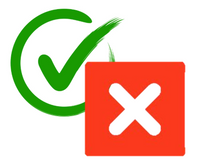SUSTAINABLE SUPPLY CHAIN & OPERATIONS STAGE
Block 1: Circular Efficiency and Resource Optimization in Supply Chains
P 1.1 No More Waste: Practical End-of-Life Solutions for Circular Supply Chains
- Building Closed-Loop Partnerships for Material Recirculation
- Consumer Take-Back Programs as Drivers of Circularity
- Using Real-Time Tracking to Minimize Waste
P 1.2 Getting Real about Resource Use: Circularity in Every Step of the Chain
- Embedding Circularity from Sourcing to Production
- Optimizing Resource Use through Cross-Functional Collaboration
- Tracking Resource Efficiency with Real-Time Data
P 1.3 Reinventing Packaging: How to Cut Costs and Emissions with Circular Materials
- Adopting Recyclable and Compostable Materials to Minimize Waste
- Optimizing Packaging Design for Transport Efficiency
- Implementing Refill and Reuse Models to Lower Long-Term Costs
P 1.4 Data-Driven Circularity: Mapping Resources for Maximum Efficiency
- Real-Time Resource Tracking for Circular Insights
- Utilizing Predictive Analytics to Prevent Overproduction
- Creating Resource Maps to Identify Reuse Opportunities
Block 2: Automation and Adaptation to Demand Peaks and Seasonal Variability
P 2.1 Scaling Up Sustainably: Automated Solutions for Demand Peaks
- Leveraging Automation to Optimize Seasonal Workforce Needs
- Utilizing AI for Real-Time Demand Forecasting and Resource Allocation
- Flexible, Scalable Robotics for High-Demand Periods
P 2.2 Reducing Waste, Meeting Demand: Inventory Strategies for Seasonal Peaks
- Dynamic Stock Management to Prevent Overproduction
- Implementing Real-Time Data for Agile Replenishment
- Collaborative Forecasting with Suppliers to Adjust for Demand Peaks
P 2.3 AI for Accuracy: Smarter Demand Forecasting to Minimize Waste
- Using AI to Improve Demand Forecast Precision
- Real-Time Adjustments with Predictive Analytics
- Aligning Production with Consumer Trends through AI Insights
P 2.4 Flexible Warehousing: Robotics for Sustainable High-Demand Periods
- Deploying Robotics to Scale Warehousing Capacity Efficiently
- Reducing Energy Consumption through Smart Robotic Systems
- Enabling Real-Time Inventory Management with Autonomous Robots
Block 3: Consumer-Centric Sustainable Logistics and Transparency
P 3.1 Transparency and Trust: New Standards in Supply Chain Reporting
- Implementing Transparent Reporting for Consumer Confidence
- Setting Standardized Metrics to Ensure Reporting Consistency
- Using Real-Time Data for Up-to-Date Reporting
P 3.2 Source to Shelf: Ensuring Traceability in Ethical Sourcing
- Building End-to-End Traceability for Consumer Assurance
- Leveraging Technology to Authenticate Supply Chain Claims
- Aligning Ethical Sourcing with Consumer Expectations
P 3.3 Building Integrity: How Transparent Operations Earn Consumer Loyalty
- Enhancing Consumer Trust through Open Supply Chain Practices
- Engaging Consumers through Visible ESG Commitments
- Maintaining Accountability with Consistent Reporting
P 3.4 Sustainable Choices at Every Stage: Aligning Supply Chains with Consumer Values
- Integrating Sustainability from Production to Delivery
- Communicating Sustainable Efforts to Enhance Consumer Alignment
- Adapting Supply Chains Responsively to Consumer Feedback on Sustainability
If you’d like to review more stages, please return to the Content Review & Feedback page and select the stages of your interest. Once you’re ready, please send your comments to: Club369@conferences-united.pl.
